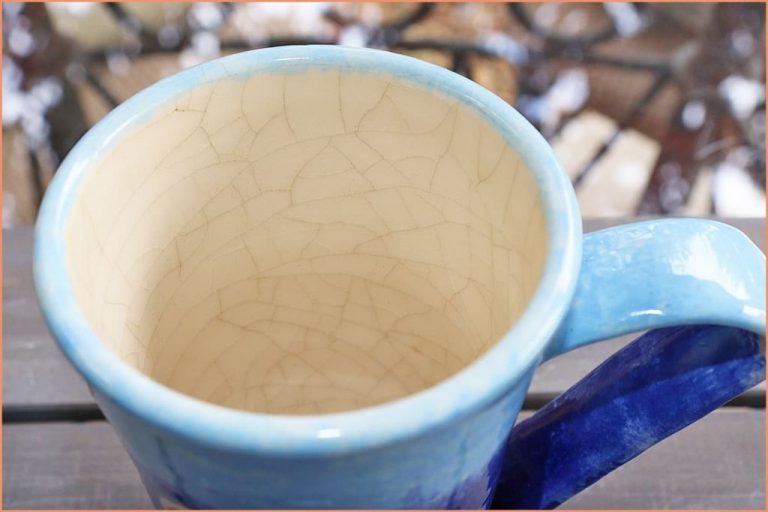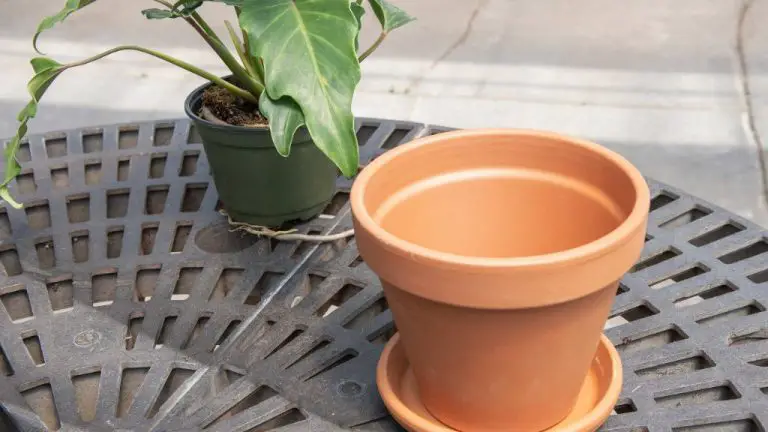What Is The Minimum Thickness For A Coil Pot?
Coil pots are a form of handbuilt pottery made by rolling out ropes or coils of clay and stacking them on top of each other to build up the walls of a pot. The coils are smoothed together from the inside using fingers, a rounded object, or a paddle.
Coil pots likely originated thousands of years ago and were widely used before the invention of the pottery wheel. Evidence of coil-built pottery dates back to at least 6000 BCE in cultures across the world, from ancient Mesopotamia and Egypt to pre-Columbian South America and Native American tribes like the Hopi [1].
Some benefits of coil building include the ability to make large or thick-walled vessels, full control over form, and avoiding the need for a pottery wheel. Coil building also lends itself to creating decorative patterns and textures by altering the coils. Today, coil pots are made by artisans and potters worldwide for both decorative and functional purposes.
Clay Properties and Thickness
The thickness of coils needed for a coil pot depends on several factors related to the properties of the clay being used.
Clays with higher plasticity and strength allow for thinner coils, while weaker clays require thicker coils for structural integrity. According to Lakeside Pottery, a good general guideline is to use coils about 1/4-3/8 inch thick for medium strength stoneware clays. Weaker clays like earthenware may need coils closer to 1/2 inch for adequate strength (Lakeside Pottery).
The desired drying time also impacts ideal thickness. Thicker coils retain moisture longer than thin coils. For quick drying pieces, thinner coils down to 1/8 inch can work well. For slower drying, thicker coils are recommended (Ceramike).
In general, thicker coils add structural durability but increase weight and drying time. Finding the right balance depends on the clay properties, intended use, aesthetics, and drying conditions.
Recommended Minimum Thickness
The minimum recommended thickness for a coil pot depends on the size and purpose of the piece. According to Ceramike, a good rule of thumb for small pieces is a minimum thickness of 1/4 inch (6mm). For larger pots and structures, the coils should be at least 1/2 inch (12mm) thick for adequate strength and durability (Ceramike).
Ancient Pottery recommends coils be rolled to a minimum of 1/2 inch thickness, regardless of the size of the pot, for sturdiness. Thicker coils are especially important for the base of a pot to prevent cracking or warping (Ancient Pottery). For very large pieces, coils up to 1 inch thick may be required.
In general, thinner coils in the 1/4-1/2 inch range are suitable for small decorative pieces like vases and bowls. Larger functional pots, jars, and vessels need thicker 1/2-1 inch coils for structural integrity and durability during daily use and firing.
Achieving Consistent Thickness
One of the keys to creating a structurally sound coil pot is achieving consistent thickness throughout the vessel. As noted in the Ceramic Arts Network article Evident Process: Coiling and Throwing, the coils should be rolled to the thickness of a standard pen. Focus on making each coil the same diameter and thickness.

When joining and smoothing coils, take care not to thin out sections excessively. Use gently pressure and avoid forcing clay around too much. Check thickness frequently with a ruler or clay cutting wire. If some areas are thicker than others, allow the clay to firm up slightly then use a wooden modeling tool to gently compress and thin the thicker sections.
If cracks appear during construction, they likely indicate your coils were not an even thickness or the joins between coils were not properly compressed. Review the cracking areas and adjust your technique. Letting clay firms up slightly between coils can help strengthen joins.
Be patient and methodical with coiling to maintain consistent vessel thickness. The time invested will pay off with a stronger final piece. For more coiling tips, see the step-by-step coil pot tutorial at https://ancientpottery.how/how-to-make-a-coil-pot/
Thicknesses for Specific Uses
The intended use and location of a coil pot will impact the ideal thickness. Thicker walls provide greater durability for functional pots, while thinner walls allow for more delicate and intricate shapes in decorative pots. Here are some thickness recommendations based on common uses:
Decorative vs Functional Pots
For decorative indoor pots that will hold lightweight items like air plants or fake flowers, a thickness around 1/4″ (according to this source) provides enough strength while keeping the weight low. Functional pots meant to hold soil, water and plants will need thicker walls – around 1/2″ to 3/4″ (per recommendations) for durability and leak resistance.
Outdoor Planters vs Indoor Pots
Outdoor planters must withstand weather fluctuations, endure frequent watering, and hold the weight of plants and soil. Aim for 3/4″ to 1″ thickness (and thicker for the base). For indoor pots not exposed to the elements, 1/2″ walls should be sufficient if drainage holes are included.
Thickness for Structural Strength
When constructing a coil pot, it is important to consider the thickness required to provide adequate structural integrity and strength. Thicker coils and walls are needed for pieces intended to bear more weight or withstand daily use. According to this source, the thickness of each coil should not exceed twice the target thickness of the finished pot’s walls. Thinner coils are more prone to cracking and collapse.
For large pots or those with thinner walls, extra reinforcements may be needed for stability. Adding an extra layer of thick coils around the base and rim provides crucial anchoring. Cross-hatching coils throughout the interior walls also helps strengthen thin-walled pots. The crisscrossing clay ropes create a matrix that prevents sagging. With proper planning and coil application, sturdy coil-built pots can be achieved even with thinner wall profiles.
Drying and Firing Considerations
The thickness of a coil pot has implications for both the drying and firing processes. Thicker coils require more drying time before firing. According to the Ceramic Arts Network, “How long you hold your sculpture at this temperature depends on how large, thick, and dry it is when you start the kiln. For my largest sculptures, if fairly thick, I find I need to hold it at about 200°F for a full 24 hours.”
When firing thinner coil pots, it’s important to slowly ramp up the kiln temperature to prevent cracking. The coils in a thin coil pot can dry quickly, leading to rapid water loss and potential cracking. Thicker coil pots have more moisture retained in the clay body for longer during firing. Slow bisque firing for thin pots allows the clay to dry slowly and release moisture before reaching higher temperatures.
Firing thicker coil pots requires more time at peak temperature as well. The center of a thick coil pot takes longer to reach the target temperature. Holding the kiln at the peak firing temperature for an extended period ensures the center of the pot reaches maturity. Monitoring kiln temperatures with cones can help determine when a thick coil pot is fully fired.
Achieving Desired Aesthetics
When making coil pots, the thickness of the coils can greatly impact the final aesthetic and texture of the finished piece. Thicker coils will create more pronounced ridges and grooves in the surface, while thinner coils can yield a smoother finish.
Many artists recommend using a coil thickness between 1/4-1/2 inch for beginners (Source). This provides enough thickness to build sturdy vessel walls, while still being thin enough to blend and smooth the coils together during tooling.
For artists desiring a more rustic, handmade look, using coils 3/4 inch or thicker can accentuate the spiral pattern. Thicker coils are also easier to imprint with textures using thumbprints, paddles, or other tools. However, blending very thick coils into a smooth surface becomes more difficult and time consuming (Source).
When tooling thicker clay walls, take care not to overly thin the coils or walls. It’s recommended to keep walls approximately 1/4 inch thick for strength and to prevent cracking and warping during drying and firing (Source). While some thinning naturally occurs through compressing and blending, take care not to excessively thin the clay.
Finding the right coil thickness for your desired look and function takes experimentation. The thickness can be adjusted throughout the process to create variations in texture. Master coil pot artists thoughtfully control thickness to achieve their artistic vision.
Weight Considerations
The thickness of a coil pot directly correlates to the weight of the finished piece. Thicker coils result in a heavier pot, while thinner coils create a lighter vessel. Many potters aim for an optimal balance between sturdiness and weight.
There are a few techniques potters can use to reduce the weight of a coil built pot if desired:
- Using a lightweight clay body – Some clays are formulated to be lighter in weight. These include clays with higher grog or organic content. Using a lightweight clay allows thinner coils while maintaining strength.
- Hollowing out interior walls – Carving out some of the interior clay can remove weight without sacrificing wall strength. This is especially helpful for larger vessels.
- Adding holes – Strategically poking holes in the walls with a skewer is another way to reduce weight. The exterior coils maintain structural integrity.
Finding the right balance of thickness and weight for a particular coil pot comes with experience. Potters should experiment to discover what works for their desired functional and artistic outcomes. Lightweight clays and techniques open up options for thin-walled coil pots.
[Cite url: https://expertclay.com/clay-weight-chart-pottery-wheel/]
Conclusion
After taking into consideration the various factors that influence coil pot thickness, we can draw some overall conclusions. The recommended minimum thickness for a functional coil pot is around 1/4 inch (6mm). Thinner pieces may be too fragile for practical use. Going thicker than 1/4 inch provides extra durability but also increases weight. For most general purposes, staying in the 1/4 inch to 1/2 inch (6mm – 12mm) range tends to work well.
To achieve your desired thickness, pay close attention when rolling out your coils. Use a ruler or clay gauge to measure as you work. For uneven or inconsistent thickness, add extra layers of coils in thinner areas. Let the clay firm up slightly between adding coils. Smooth the inner and outer surfaces carefully to reduce lumps and bulges. Firing schedule, clay type, aesthetics, and weight should also factor into your chosen thickness.
With some practice and care, you can successfully create coil pots with the ideal thickness for your needs. The finished result will be both visually appealing and functionally durable. Mastering thickness control is a valuable skill on your clay crafting journey.




